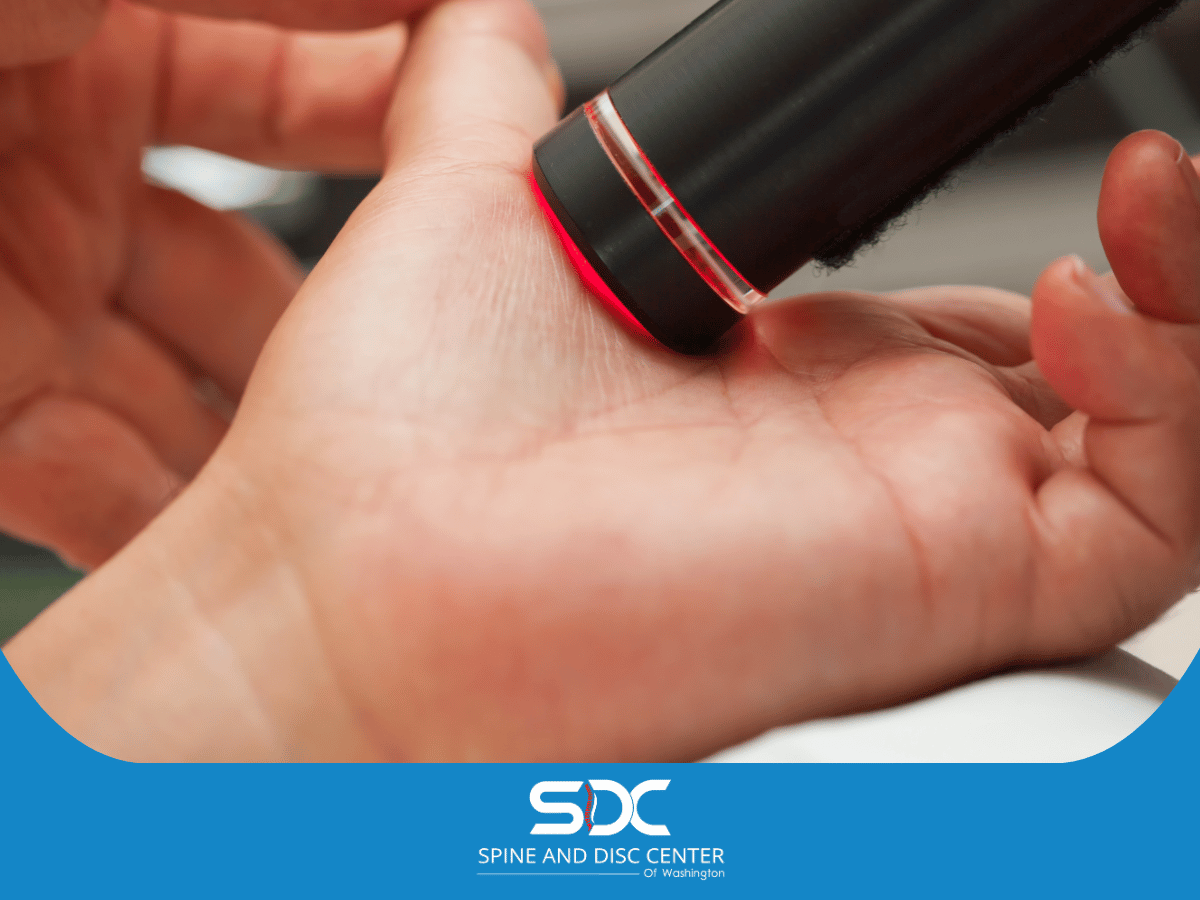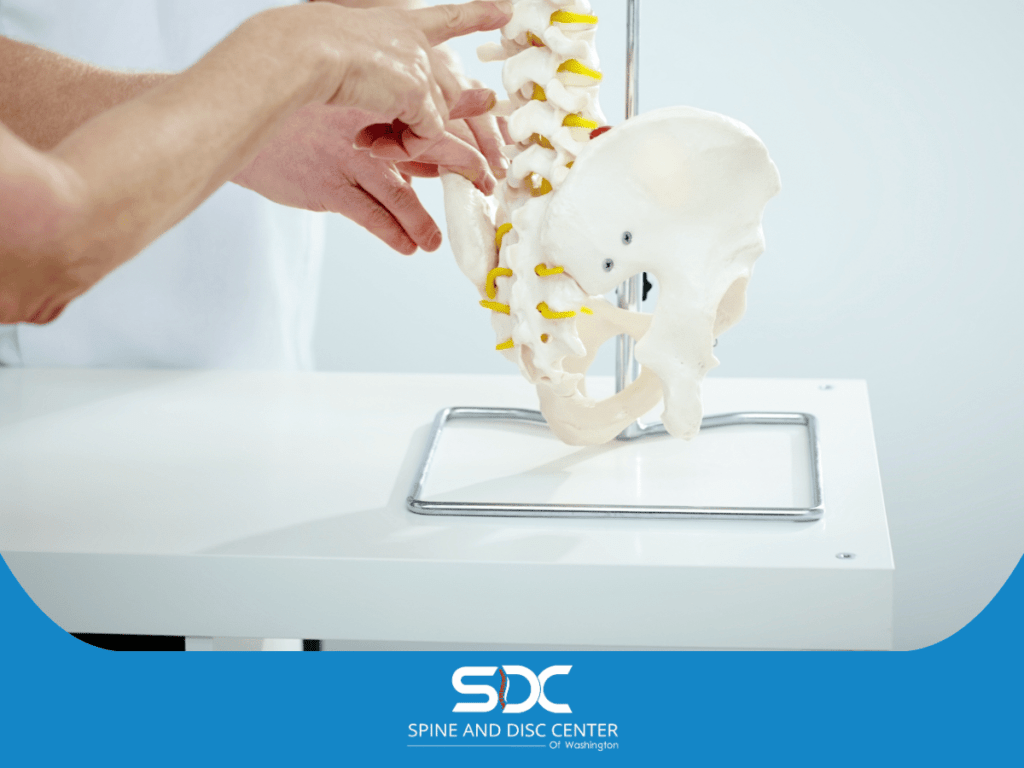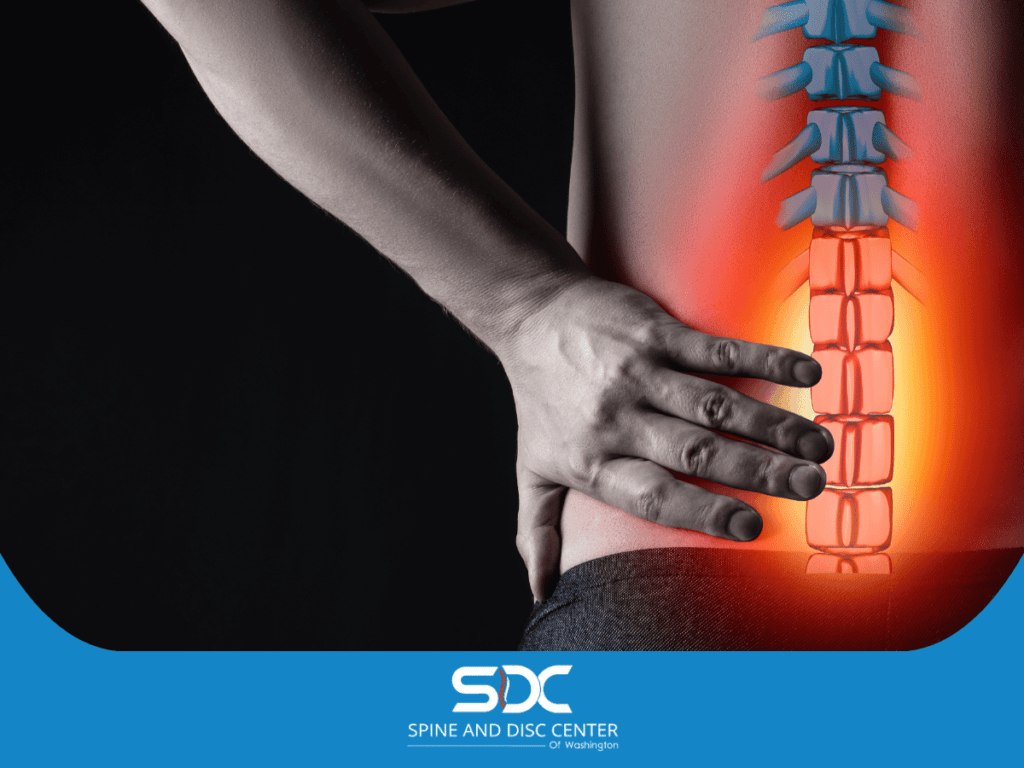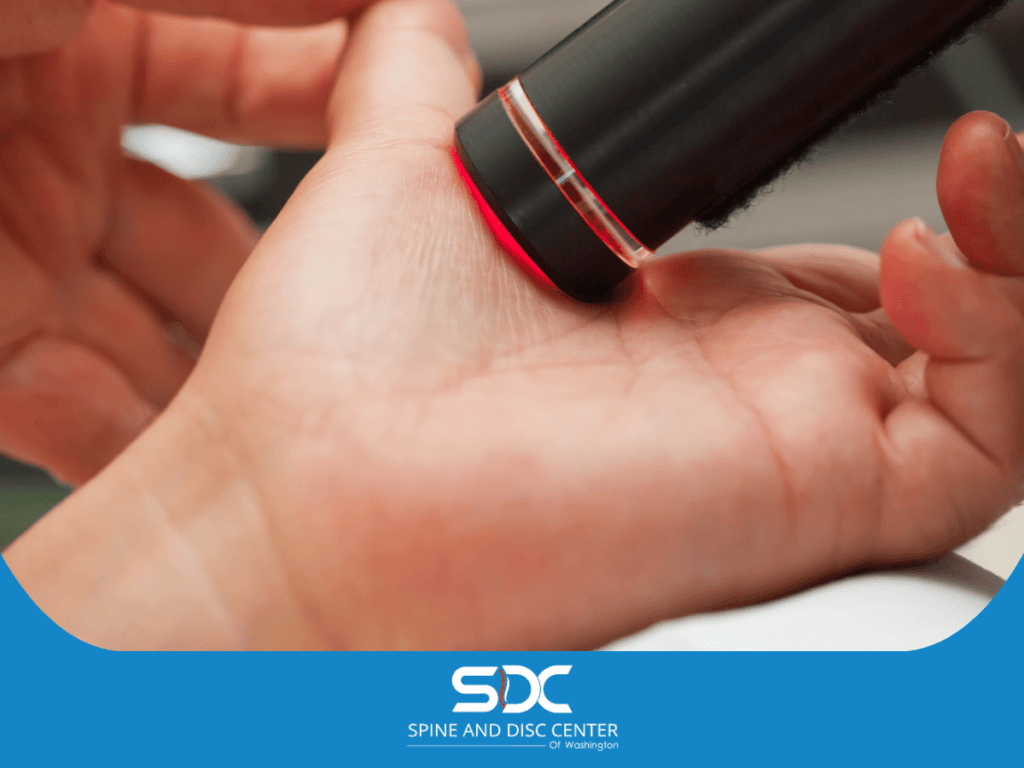Neuropathy, a condition affecting millions of people worldwide, results from nerve damage and leads to symptoms like pain, tingling, and numbness. This condition can severely impact a person’s quality of life, making everyday activities challenging.
Among the various treatments available, low intensity laser therapy for neuropathy has gained attention for its effectiveness and non-invasive nature.
This comprehensive guide delves into the intricacies of laser therapy, exploring its benefits, mechanisms, and clinical evidence.
What is Neuropathy?
Neuropathy, often referred to as peripheral neuropathy, involves damage to the peripheral nerves. These nerves are responsible for transmitting signals between the central nervous system and the rest of the body. When these nerves are damaged, it can lead to symptoms such as:
- Pain: Often described as burning, shooting, or stabbing.
- Tingling and Numbness: Commonly felt in the hands and feet.
- Muscle Weakness: Difficulty in performing everyday tasks.
- Loss of Coordination: Affects balance and fine motor skills.
Peripheral neuropathy can result from various causes, including diabetes (leading to diabetic peripheral neuropathy), infections, injuries, and exposure to toxins.
Diabetic neuropathy, particularly painful diabetic peripheral neuropathy, is a common complication in people with diabetes, significantly affecting their quality of life.
Understanding Laser Therapy
Laser therapy, also known as low level laser therapy (LLLT) or low intensity laser therapy, or deep tissue laser therapy, involves using specific wavelengths of light to penetrate the skin and underlying tissues.
This non-invasive treatment has been shown to promote healing, reduce inflammation, and relieve pain. There are different types of laser therapy used for neuropathy:
- Low Level Laser Therapy (LLLT): Low-intensity lasers are used to stimulate cellular activity and promote healing.
- Deep Tissue Laser Therapy: Uses higher intensity lasers to penetrate deeper into tissues, targeting more severe nerve damage.
The laser device used in these therapies delivers light energy to the affected areas, stimulating cellular processes that aid in tissue repair and pain relief.
How Laser Therapy Works for Neuropathy
The effectiveness of laser therapy for neuropathy lies in its ability to stimulate cellular activity and enhance blood flow. When the laser energy is absorbed by the cells, it triggers a series of biological responses that promote healing and reduce pain. Key mechanisms include:
- Increased Blood Flow: Laser therapy improves circulation, delivering more oxygen and nutrients to damaged tissues, facilitating repair.
- Reduction of Inflammation: The anti-inflammatory effects of laser therapy help in reducing swelling and pain.
- Stimulation of Cellular Activity: Laser energy stimulates the production of ATP (adenosine triphosphate), which is essential for cellular repair and regeneration.
- Nerve Regeneration: Laser therapy promotes the growth of new nerve fibers, aiding in the repair of damaged nerves.
These mechanisms collectively contribute to the clinical effectiveness of laser therapy in managing neuropathic pain, including peripheral neuropathic pain, and improving patients’ overall quality of life.
Low Level Laser Therapy (LLLT)
Low-level laser therapy (LLLT) is a widely used form of laser treatment for neuropathic pain. This therapy involves the use of low-intensity lasers that penetrate the skin and tissues to stimulate healing at a cellular level. Some benefits of LLLT include:
- Pain Relief: LLLT helps in reducing neuropathic pain by promoting nerve regeneration and reducing inflammation.
- Improved Neurovascular Function: Enhanced blood flow and nerve function lead to better overall health of the affected area.
- Enhanced Quality of Life: Patients experience significant improvement in their daily activities and overall well-being.
Several clinical trials and systematic reviews have demonstrated the positive effects of LLLT or low intensity laser therapy on patients with peripheral neuropathy. These studies highlight its potential as an effective treatment option for managing neuropathy symptoms.
Deep Tissue Laser Therapy
Deep tissue laser therapy, as the name suggests, targets deeper tissues to address severe nerve damage and chronic pain. This therapy uses higher-intensity lasers that penetrate deeper into the tissues, providing more effective relief for conditions like diabetic peripheral neuropathy and sciatica.
The benefits of deep tissue laser therapy include:
- Significant Pain Reduction: By targeting deeper tissues, this therapy substantially relieves chronic pain.
- Improved Nerve Function: Promotes nerve regeneration and repair, leading to better nerve function.
- Enhanced Healing: Stimulates the release of growth factors that aid in tissue repair and regeneration.
Patients undergoing deep tissue laser therapy report significantly improving their pain levels and overall quality of life. Clinical trials have shown positive results, making it a promising treatment option for neuropathic pain.
Diabetic Peripheral Neuropathy and Laser Therapy
Diabetic peripheral neuropathy is a common and challenging complication of diabetes. This condition results from prolonged high blood sugar levels, which cause damage to the peripheral nerves.
Symptoms include pain, tingling, and numbness, which are characteristic of peripheral neuropathic pain, primarily in the hands and feet.
Managing diabetic neuropathy is crucial to improving patients’ quality of life. Laser therapy offers a promising solution for this condition. Studies have shown that laser therapy can:
- Reduce Pain: Patients experience a significant reduction in neuropathic pain after laser therapy sessions.
- Promote Nerve Regeneration: Laser therapy aids in the repair and regeneration of damaged nerves.
- Improve Quality of Life: Patients report better daily functioning and reduced discomfort.
Pain Management and Reduction
Effective pain management is a critical aspect of treating neuropathy. Laser therapy has proven to be a powerful tool in reducing neuropathic pain, including peripheral neuropathic pain, and improving patients’ quality of life.
The treatment works by:
- Targeting Damaged Nerves: Laser therapy focuses on the affected nerves, promoting repair and regeneration.
- Reducing Inflammation: Laser therapy’s anti-inflammatory effects help alleviate pain and prevent further nerve damage.
- Promoting Healing: Increased blood flow and cellular activity facilitate tissue repair and pain relief.
Practical Aspects of Laser Therapy
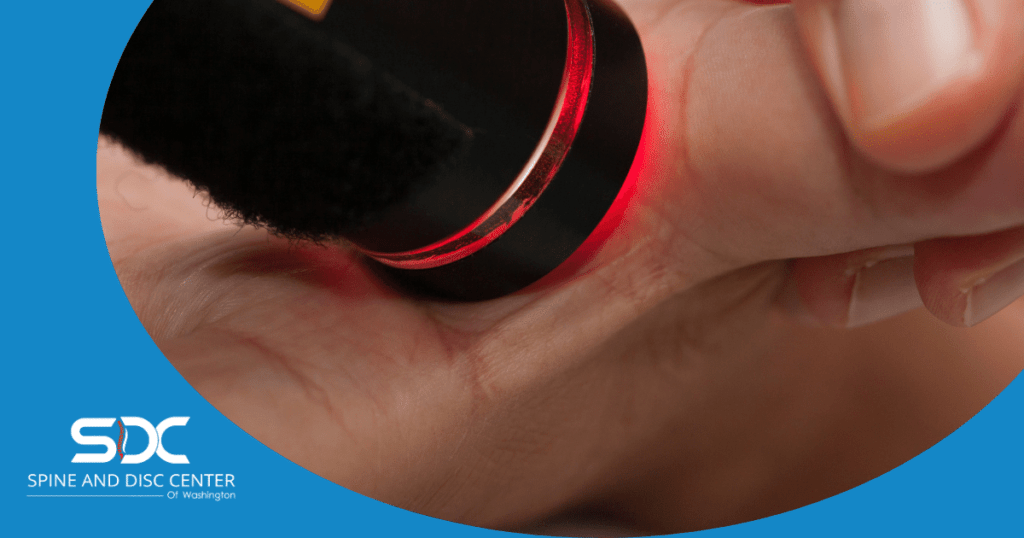
Laser therapy is not only effective but also practical for patients. Treatment sessions are typically short, ranging from 15 to 30 minutes, depending on the severity of the condition.
Patients can expect to see improvements after a few sessions, with the full benefits becoming more apparent over time.
During a laser therapy session, a laser device is used to deliver targeted laser energy to the affected area. The process is painless and non-invasive, making it a convenient option for patients seeking relief from neuropathic pain.
Post-treatment, patients can resume their normal activities without any downtime.
Patients are often required to undergo multiple sessions to achieve optimal results. The number of sessions depends on the severity of the condition and the individual’s response to treatment.
However, even after a few sessions, many patients report significant pain relief and improved nerve function.
Other Benefits of Laser Therapy
Beyond pain relief, laser therapy offers several other benefits. It promotes tissue repair and regeneration, which is crucial for conditions like peripheral neuropathy where nerve damage is significant.
The increased blood flow stimulated by laser energy helps deliver essential nutrients and oxygen to the damaged tissues, facilitating healing.
The anti-inflammatory effects of laser therapy further enhance its clinical effectiveness. By reducing inflammation, laser therapy helps alleviate pain and prevent further damage to the nerves. This makes it an excellent option for patients with chronic conditions like diabetic neuropathy.
Mechanisms of Action in Laser Therapy
Understanding the mechanisms behind laser therapy can provide insight into why it is so effective for neuropathy. Here’s a closer look at how laser therapy works at a cellular level:
- Photobiomodulation: Laser therapy induces photobiomodulation, which converts light energy into biochemical energy. This stimulates cellular repair and regeneration.
- ATP Production: Laser therapy increases the production of adenosine triphosphate (ATP), the primary energy carrier in cells. Enhanced ATP production accelerates cellular processes necessary for healing and pain relief.
- Nitric Oxide Release: Laser therapy stimulates the release of nitric oxide, a molecule that dilates blood vessels and improves circulation. Increased blood flow delivers more oxygen and nutrients to damaged tissues.
- Collagen Production: Laser therapy promotes collagen production, a protein essential for tissue repair and regeneration. Increased collagen helps in the healing of damaged nerves and tissues.
- Anti-Inflammatory Effects: Laser therapy reduces pro-inflammatory cytokines and increases anti-inflammatory cytokines, decreasing inflammation and pain.
These mechanisms collectively contribute to the effectiveness of laser therapy in managing neuropathic pain and promoting nerve health.
Laser Therapy for Specific Conditions
Laser therapy can be tailored to treat various specific conditions associated with neuropathy. Here’s how it works for some common neuropathic conditions:
Diabetic Peripheral Neuropathy (DPN):
- Mechanism: Laser therapy reduces blood sugar levels and inflammation, promoting nerve repair.
- Benefits: Patients experience reduced pain, improved sensation, and better overall nerve function.
- Studies: Clinical trials have significantly improved pain relief and nerve function in patients with DPN after laser therapy.
Sciatica:
- Mechanism: Laser therapy targets the sciatic nerve, reducing inflammation and promoting tissue repair.
- Benefits: Patients report reduced pain and improved mobility.
- Studies: Research indicates that laser therapy can effectively alleviate the chronic pain associated with sciatica.
Post-Surgical Nerve Pain:
- Mechanism: Laser therapy enhances tissue repair and reduces inflammation at the surgical site.
- Benefits: Patients experience faster recovery and reduced post-surgical pain.
- Studies: Clinical evidence supports the use of laser therapy for managing post-surgical nerve pain, with patients reporting significant pain reduction.
Advanced Applications and Research
The field of laser therapy is continuously evolving, with ongoing research exploring new applications and enhancing existing treatments. Here are some advanced applications and recent research findings:
Combination Therapies:
- Mechanism: Combining laser therapy with other treatments, such as physical therapy or pharmacological interventions, can enhance overall treatment effectiveness.
- Benefits: Patients receive comprehensive care, addressing multiple aspects of neuropathic pain.
- Studies: Research shows that combination therapies can improve outcomes compared to single-treatment modalities.
Customized Treatment Protocols:
- Mechanism: Personalized laser therapy protocols tailored to individual patient needs and conditions.
- Benefits: Customized treatments result in better patient outcomes and satisfaction.
- Studies: Pilot studies indicate that personalized laser therapy protocols can significantly improve pain relief and functional recovery.
New Laser Technologies:
- Mechanism: Development of advanced laser devices with improved precision and efficacy.
- Benefits: Enhanced treatment capabilities and better patient experiences.
- Studies: Ongoing research is focused on developing next-generation laser technologies for more effective neuropathy treatment.
Potential Risks and Considerations
While laser therapy is generally safe and well-tolerated, it is important to consider potential risks and contraindications:
- Skin Sensitivity: Some patients may experience mild skin irritation or redness at the treatment site.
- Photosensitivity: Individuals with photosensitive conditions should consult their healthcare provider before undergoing laser therapy.
- Pregnancy: The safety of laser therapy during pregnancy has not been fully established; pregnant women should seek medical advice.
- Pre-Existing Conditions: Patients with certain medical conditions, such as cancer or epilepsy, should discuss the suitability of laser therapy with their doctor.
Patients must undergo a thorough medical evaluation and provide informed written consent before starting laser therapy. This ensures that the treatment is appropriate and tailored to their specific needs.
Patient Education and Support
Educating patients about laser therapy and providing ongoing support is crucial for successful treatment outcomes.
Key aspects of patient education include:
- Understanding the Treatment: Providing detailed information about how laser therapy works and its benefits.
- Setting Realistic Expectations: Helping patients understand the expected outcomes and timeline for improvement.
- Post-Treatment Care: Offering guidance on post-treatment care and lifestyle adjustments to enhance the benefits of laser therapy.
Support groups and resources can also play a vital role in helping patients manage their condition and stay motivated throughout the treatment process.
Conclusion
Laser therapy for neuropathy offers a powerful and promising treatment option for managing neuropathic pain and improving patients’ quality of life.
Its non-invasive nature, combined with its effectiveness in promoting nerve regeneration and reducing inflammation, makes it a valuable addition to neuropathy treatment protocols.
Understanding the mechanisms of action, potential benefits, and practical aspects of laser therapy can help patients and healthcare providers make informed decisions about incorporating this innovative treatment into their care plans.
Final Thoughts
This blog post is intended for informational purposes only and should not be blindly followed. It is not a substitute for professional medical advice, diagnosis, or treatment.
For personalized diagnostic and guidance tailored to your specific condition, please schedule an appointment with a qualified healthcare provider.


